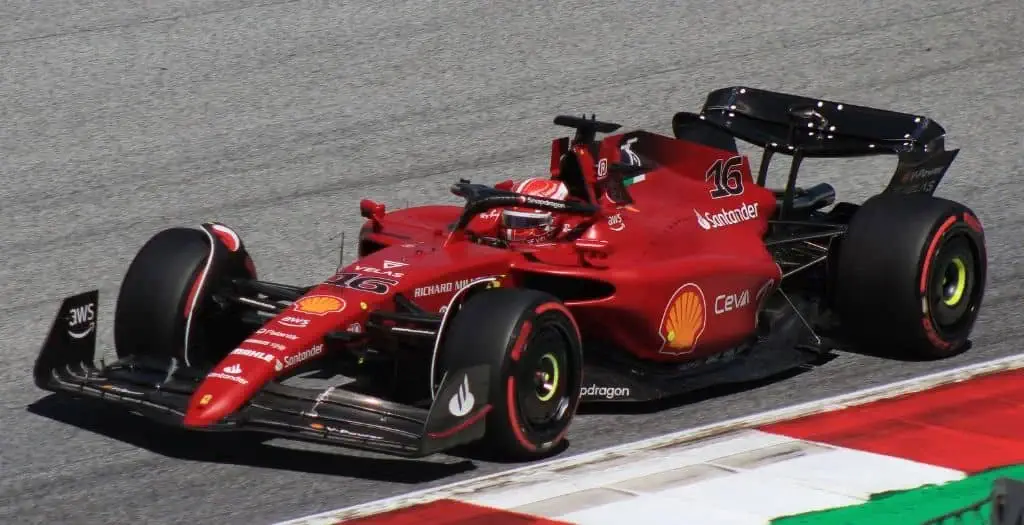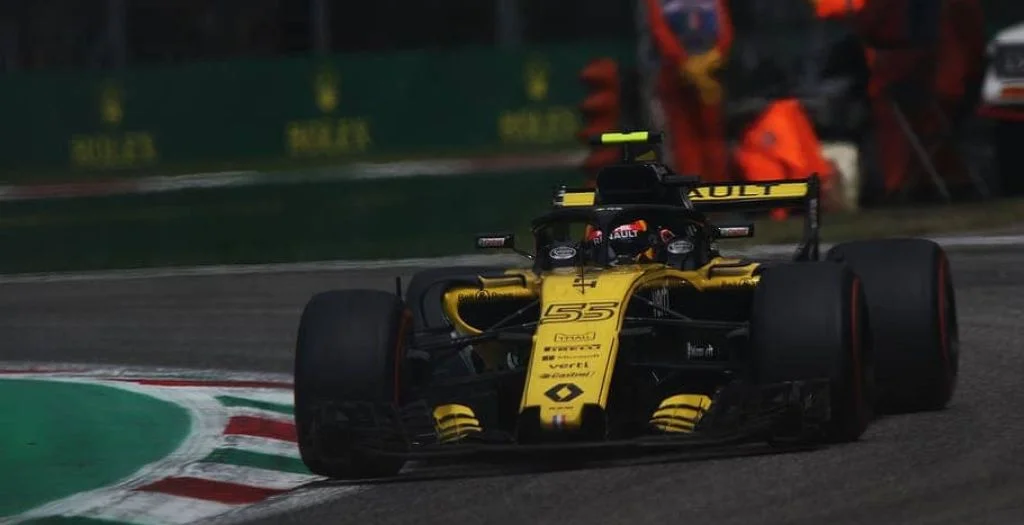Monza has hosted the Italian Grand Prix every year since 1950, except for 1980. One of the quickest and most difficult circuits requires team and driver strategy for its high-speed straights and small chicanes.
Monza is unusual because teams employ wing designs to improve their vehicles for this track. Downforce and drag from aerodynamic wings affect car speed, stability, and handling. Teams must balance these two forces based on track features to succeed.
Monza’s unique wing method, why this circuit needs minimal downforce, and drag, We’ll discuss how various teams have handled this throughout the years, its challenges and possibilities, and what we can anticipate from them.
The importance of wing design in F1
Wings are one of the most visible and variable elements of an F1 car’s aerodynamic package. They consist of several elements that can be adjusted or changed to suit different conditions and preferences. The nose, bargeboards, sidepods, floor, diffuser, and rear endplate have smaller wings than the primary wings on the vehicle. Teams must manage these two factors to perform well, depending on each course.
Downforce from wings drives the car into the track, improving grip and cornering speed. Downforce depends on automobile speed and wing angle of attack. More downforce occurs at greater speeds and angles.
However, downforce also comes with a cost: drag. Drag is a force that opposes the motion of the car, reducing its speed and acceleration. Drag is also proportional to the speed of the car and the angle of attack of the wing elements. The higher the speed and angle, the more drag is produced.
Therefore, teams have to find a trade-off between downforce and drag, depending on their goals and priorities. On a long straight, a team will pick short or flat wings with low downforce and drag for maximum speed. Teams use strong downforce, and high drag designs with enormous or curved wings to boost cornering speed on curving stretches.
Different tracks have different characteristics that demand different levels of downforce and drag. Monaco, with its slow turns and short straights, demands significant downforce and drag for optimum traction and stability. Spa’s quick and slow corners and long straights necessitate a medium downforce, and medium drag configuration to balance speed and handling. Monza’s few turns and long straights necessitate a low downforce, and low drag configuration to enhance speed and economy.
The Monza downforce-drag tradeoff
Reasons why Monza is called the ‘Temple of Speed’. The F1 calendar’s fastest track averages over 250 km/h and tops out at 360 km/h. Four long straights let cars reach top speed, but three tight chicanes necessitate hard braking and quick direction changes. Two medium-speed turns, the Curva di Lesmo and the Curva Alboreto (previously Parabolica), need downforce to ensure stability.
Monza teams must create a wing layout that decreases straight-line drag and provides enough downforce in corners. This is difficult since these two forces trade off. According to estimations, raising the wing angle adds 10 kg of downforce and 0.3 seconds per lap in drag. Conversely, reducing the wing angle by 10 kg of downforce adds 0.3 seconds per lap in drag.
To illustrate this trade-off, let’s look at some data from the 2021 Italian Grand Prix qualifying session. Below are the top 10 Q3 drivers’ peak speeds, lap times, and estimated wing angles (in degrees) based on eye analysis.
| Driver | Team | Top Speed (km/h) | Lap Time (s) | Wing Angle (deg) |
|---|---|---|---|---|
| Valtteri Bottas | Mercedes | 355.2 | 79.492 | 7 |
| Lewis Hamilton | Mercedes | 354.8 | 79.525 | 7 |
| Max Verstappen | Red Bull | 351.9 | 79.879 | 9 |
| Lando Norris | McLaren | 353.6 | 80.019 | 8 |
| Daniel Ricciardo | McLaren | 353.4 | 80.084 | 8 |
| Pierre Gasly | AlphaTauri | 352.5 | 80.556 | 9 |
| Carlos Sainz Jr. | Ferrari | 350.4 | 80.702 | 10 |
| Charles Leclerc | Ferrari | 350.2 | 80.828 | 10 |
| Sergio Perez | Red Bull | 351.5 | 80.862 | 9 |
| Antonio Giovinazzi | Alfa Romeo | 349.6 | 81.206 | 6 |
Lap time also depends on wing angle: lower wing angles mean faster lap times, and vice versa. Giovinazzi recorded the fastest lap timings (over 81 seconds), while Bottas and Hamilton had the slowest (79.5 seconds). This is because lower wing angles also mean lower downforce, which reduces cornering speed and stability.
At Monza, teams must balance speed and handling based on vehicle attributes, engine power, and tire management. Some aggressive teams use lower wing angles to gain an edge on straights but lose corners. Others are more conservative, having higher wing angles that help in corners but hurt on straights.
The diverse wing technique that makes Monza an F1 outlier
Monza is one of the few F1 courses that demands a unique wing design. Most circuits have comparable downforce and drag, so teams may employ identical or slightly changed wings all season. Monza is so distinct from other circuits that teams must design and build wings for this race.
Teams may test several Monza wing options based on vehicle parameters, engine power, and tire management. Some aggressive teams use lower wing angles to gain an edge on straights but lose corners. Other cautious teams use greater wing angles to gain an advantage in corners but lose in straights.

Monza has seen some of the most radical and imaginative wing designs as teams struggle to balance speed and control. McLaren employed a low-downforce, low-drag rear wing with a narrow main plane and tiny flap in 2012. This gave them a significant speed boost on the straights but also made their car very unstable in the corners. They qualified on pole and won the race, but had multiple spins and lockups during the weekend.
In 2019, Ferrari utilized a broad main plane and a huge flap rear wing with significant downforce and drag. This made their vehicle sluggish on straights but offered them grip and stability in bends. Their pole position and race triumph came after a tight duel with Mercedes, which had a better-balanced wing arrangement.
In 2020, Red Bull Racing utilized a double-stacked rear wing with two main planes and two flaps at Monza. This gave them more downforce and drag than their usual low downforce wing, but also more flexibility and adjustability. They could change the angle of each element independently, to suit different parts of the track. They also employed a sophisticated DRS system that opened both flaps simultaneously to cut drag on straights.
The Monza wing selection difficulties and possibilities
The strategy, overtaking, and defense of a team at Monza depend on their wing choice. A team with a lower downforce wing will have an edge on straights but a disadvantage on bends. This means that they will be faster in qualifying, but slower in the race. They will also have more tire wear and degradation, as they will have less grip and more sliding. They will have to pit more often or use harder compounds, to manage their tires.
A greater downforce wing offers a team an edge in turns but a disadvantage on straights. They will also have less tire wear and degradation, as they will have more grip and less sliding. They will be able to pit less often or use softer compounds, to optimize their tires.
However, having a higher or lower downforce wing also affects the ability to overtake and defend at Monza. A reduced downforce wing will increase straight-line speed, helping a team overtake or defend on long straights. Less braking capability and turning speed will leave them susceptible to cars overtaking or attacking them.
A stronger downforce wing will slow straight-line speed, making it tougher to overtake or defend on long straights. They will also have better braking and turning speeds, helping them overtake or attack chicanes.
Thus, in Monza, teams must weigh the pros and cons of each wing choice and pick the best one for their car and strategy. Sometimes, they may even choose different wings for different drivers within the same team, depending on their preferences and positions.
The most famous Formula One races and events were affected by wing decisions at Monza. For example,
- In 1971, Peter Gethin won the closest F1 race ever at Monza by just 0.01 seconds over Ronnie Peterson. He used a very low downforce wing that gave him an edge on the straights over his rivals.
- In 1988, Ayrton Senna crashed out of the lead at Monza after hitting a backmarker. He used a very high downforce wing that gave him superior cornering speed over his teammate, Alain Prost.
- In 2004, Rubens Barrichello beat Michael Schumacher at Monza by using a different rear wing. He used a smaller wing that gave him more speed on the straights than Schumacher’s larger wing.
- Sebastian Vettel won the F1 race at Monza with a Toro Rosso car with a low-downforce wing in the rain.
- Fernando Alonso won his first Ferrari race at Monza in 2010 with a greater downforce wing than Felipe Massa. He overtook Massa at the start and defended from Jenson Button, who had a lower downforce wing, on the straights.
- In 2019, Charles Leclerc beat Lewis Hamilton and Valtteri Bottas at Monza with a greater downforce wing than Sebastian Vettel. On the chicanes, he outran Mercedes drivers with lower downforce wings due to his greater cornering speed.
The future of Monza wing design
The new F1 technical rules in 2023 will affect Monza’s wing shape and performance. The revised regulations simplify and unify aerodynamic components, including wings, floors, diffusers, and bargeboards, to enhance racing and save costs.
The redesigned wings will be simpler and smaller, with fewer parts and modifications. The front wing will be 2 meters wide, 0.25 meters deep, and have three components maximum. The rear wing will be 1 meter wide, 0.7 meter deep, and consist of two components maximum. The DRS technology will only open the rear wing’s top section.
The revised wings will cut downforce and drag, lowering Monza’s lap times and peak speeds. Models indicate the new Monza cars will be 3 seconds slower each lap and 15 km/h slower on straights.
However, the redesigned wings will reduce turbulence and increase the wake behind the vehicles, improving Monza’s passing and following. Future vehicles may follow each other in 0.5 seconds without losing performance, compared to 1.5 seconds for existing cars.
Under the 2023 technical rules, Monza teams and drivers must adapt to a new wing shape and performance, presenting new challenges and chances. Since they have less room for variety and invention, they must find new methods to optimize their cars for this circuit.
Teams and drivers must adjust to Monza’s fast straights and tight chicanes, making it an intriguing F1 circuit. The wing design teams adopt to optimize their vehicles at Monza sets it apart from other courses.
Wings are aerodynamic devices that generate downforce and drag on the car, affecting its speed, stability, and cornering ability. Teams must manage these two factors to perform well, depending on each course.
Read More news.
On the straights at Monza, teams must limit drag and produce adequate downforce in the turns to balance speed and handling. This is not an easy task, as there is a significant trade-off between these two forces.
Monza has seen some of the most inventive wing designs as teams strive to solve this track. Some aggressive teams use lower wing angles to gain an edge on straights but lose corners. Other cautious teams use greater wing angles to get a corner advantage but are vulnerable on straights.

